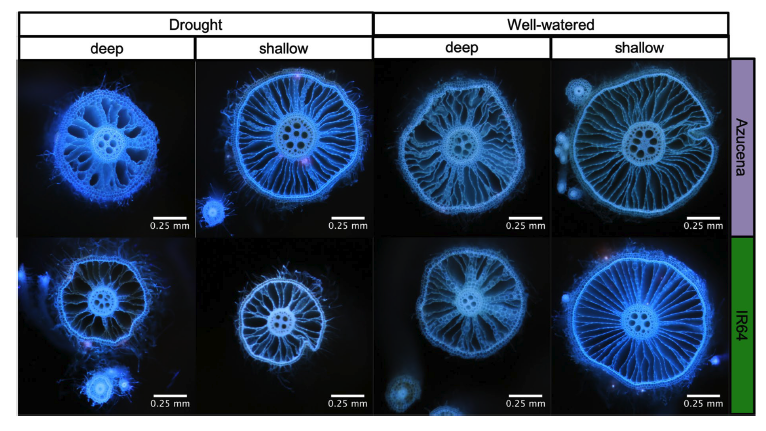
Spatiotemporal responses to drought in rice roots
Authors
Fonta JE, J Giri, P Vejchasarn, JP Lynch, KM Brown
Source
Plant and Soil (2022)
https://doi.org/10.1007/s11104-022-05527-w
Download Options
Abstract
Aims Growth reductions and yield losses from drought could be mitigated by developing rice genotypes with more efficient root systems. We examined spatiotemporal responses to drought in order to determine whether roots developing in upper vs. deeper soil layers respond differently to drought stress.
Methods Root anatomical and architectural phenotypes of two rice genotypes, Azucena (drought tolerant) and IR64 (drought susceptible), were measured weekly in well-watered and vegetative-stage drought stress treatments in solid medium with stratified moisture availability. Basal and apical segments were collected from older, deeper nodal roots and apical segments from younger, shallow roots for assessment of anatomy and lateral rooting phenotypes. The relationship between root anatomy and root respiration rates was tested in solution culture and solid medium.
Results Compared to IR64, Azucena had deeper root systems and larger diameter roots in both treatments but reduced its living tissue area in response to drought, while IR64 roots exhibited less plasticity in root diameter. Root respiration rates were positively correlated with root diameter and living tissue area, providing evidence that root anatomy affects the metabolic cost of tissues. In response to drought, Azucena showed reduced theoretical axial hydraulic conductance in shallow roots and at the base of deep roots but slightly greater conductance at the tip of deep roots, while IR64 displayed low plasticity in metaxylem phenotypes.
Conclusion We propose that the plasticity of root phenotypes in Azucena contributes to its drought tolerance by reducing the metabolic cost of soil exploration and improving the efficiency of water transport.

